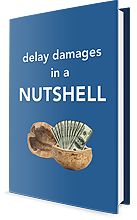How to Get Your Construction Team to Actually Use the Schedule
Here’s an all too common question I recently received from a construction management firm:
“Our company wants to start using schedules to help manage our projects. Most of our employees don’t believe in schedules and don’t bother to use them. What’s the best way to help our company mature and change the way we look at using schedules?”
I think the first thing you must do is show people how a schedule can make their job easier and make them better at their job.
For example, on a project I recently worked on, none of the submittal activities were in the schedule. There was nothing about steel fabrication and delivery, nothing about structural stud fabrication and delivery, nothing about the roof submittal, or anything like that. The schedule only included construction activities.
Each of those activities started late. The roof, the structural steel, the structural studs, and all the related construction activities started late. They started late because people lost track of the procurement process for these items.
When you look at the project, you’ll see the steel erection got started late. But why did it get started late? It started late because no one was paying attention. The submittal process started a month late.
Good Schedules Will Make Your Job Easier
One of the things I think we need to be able to show construction professionals is that having a good schedule on the project really makes a difference in terms of the quality of their execution.
Another place where people can learn to appreciate the value of schedules is when they can say, “Look, I have a schedule that lets me know how I’m supposed to do my work. If you make a change, because of the change, I can’t do my work.”
For example, if a contractor only used the schedule to inform the owner when he or she planned to perform their work, it wouldn’t be very persuasive in convincing the owner that its actions delayed the project. But if a contractor used the schedule to show an owner how its change caused the work to be delayed, that’s a huge difference. The schedule increases your ability to prove that their change impacted your work.
Once an owner can be shown that their change has delayed the project, they’re generally willing to step up to the plate, either by giving a time extension, or requesting additional compensation.
So, the bottom line for me is you must convince your staff that the schedule will truly make them better at their jobs. It will allow them to finish their projects with a higher profit. It will allow them to finish their projects more successfully.
Get the Senior Managers on Board
To some extent, it really is a top-down solution. The senior managers of the company must value schedules, believe what the schedule says, and show how schedules really do make a difference in the success of their performance.
Let’s say I’m a senior manager, and I’m trying to convince my staff to use a schedule. The first thing I’ll do when I visit the project is look at the schedule. I’ll say, “Okay, what does your schedule show? Well, this isn’t what’s going on with this project. This project is behind.”
We would never allow our project managers to produce an inaccurate job cost report. We insist the job cost report must be an accurate reflection of what it’s going to cost to finish the project. One of the reasons for an inaccurate job cost report is a second-rate schedule. The result of an inaccurate job cost report is the increased cost to finish the project.
We need to convince our people that the schedule really is a valuable tool. It makes a valuable difference in their lives.
Scott Lowe is a Principal of TRAUNER and is an expert in the areas of critical path method scheduling, construction claim preparation and evaluation, and specification writing. He can be reached at scott.lowe@traunerconsulting.com.
If you liked this article, be sure to sign up on the left side of our website to receive our Ideas & Insights in your email. Be sure to check your email after signing up!

